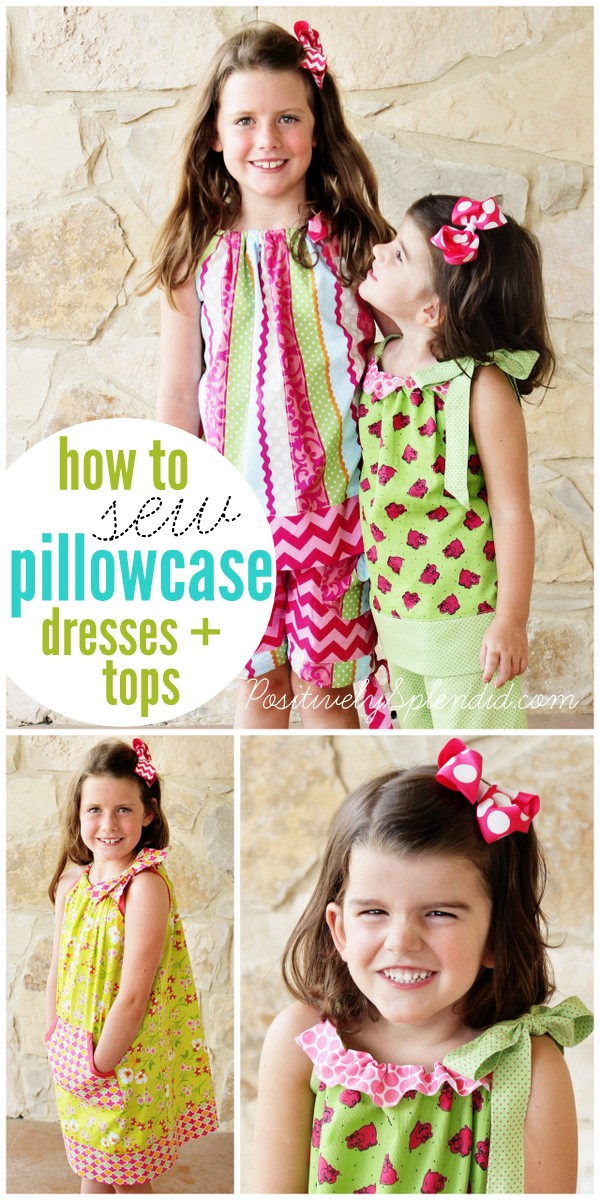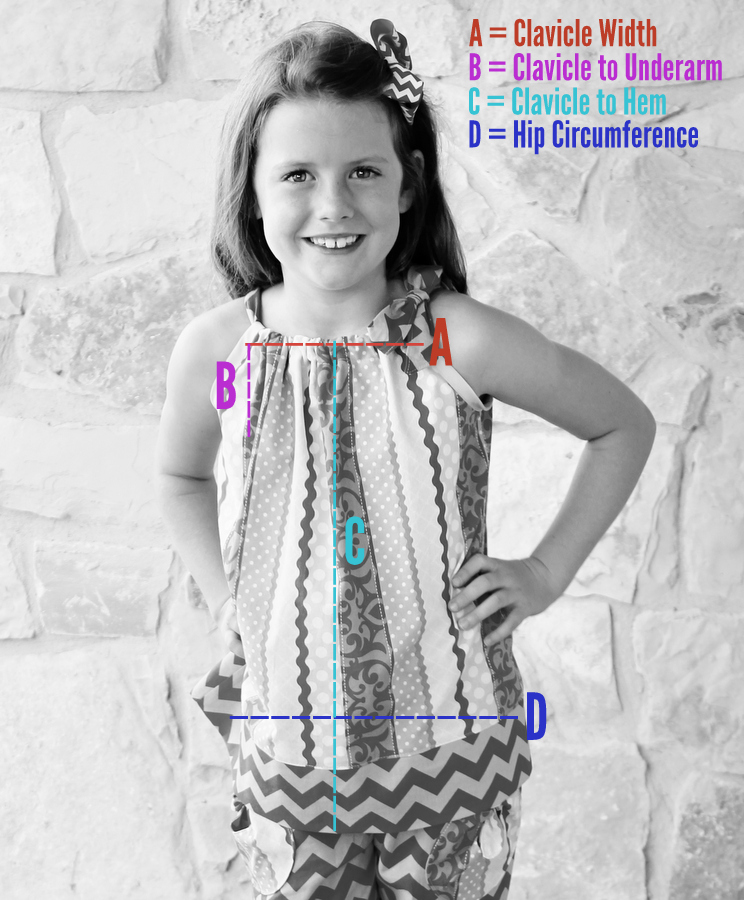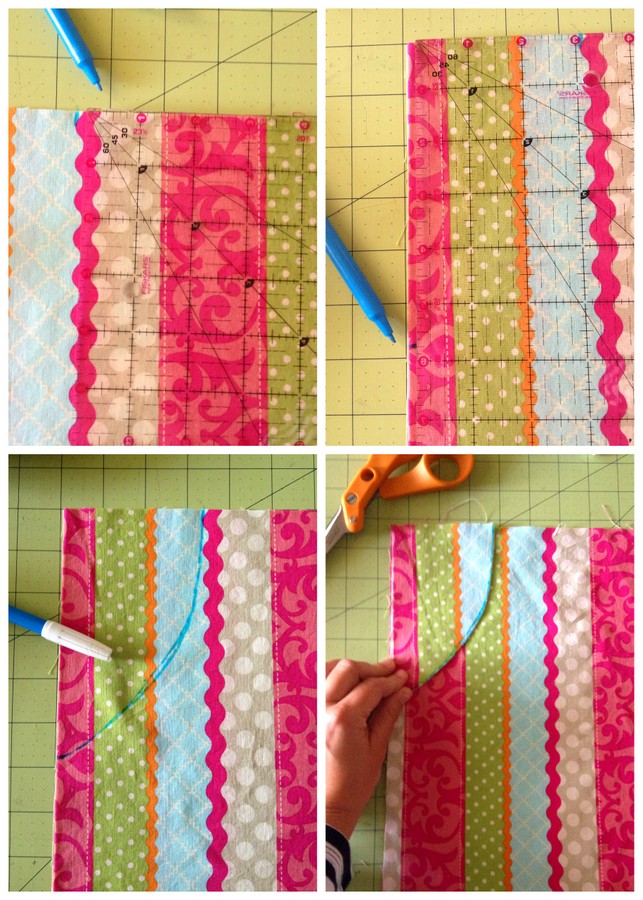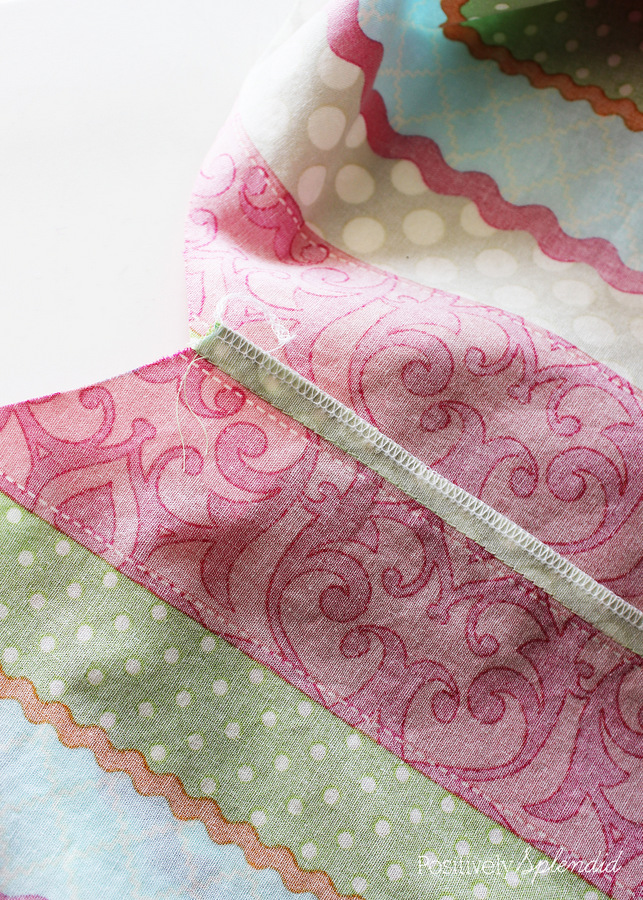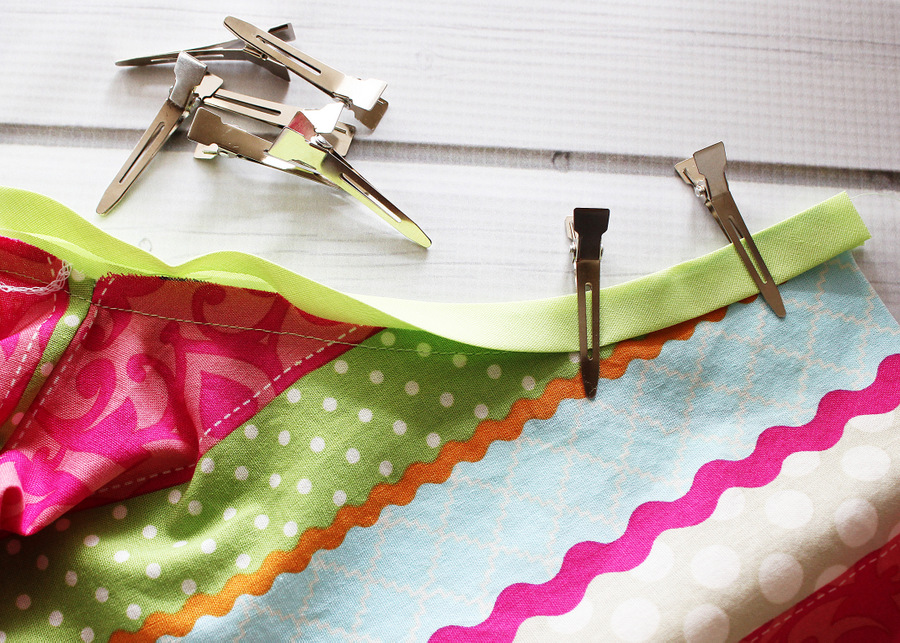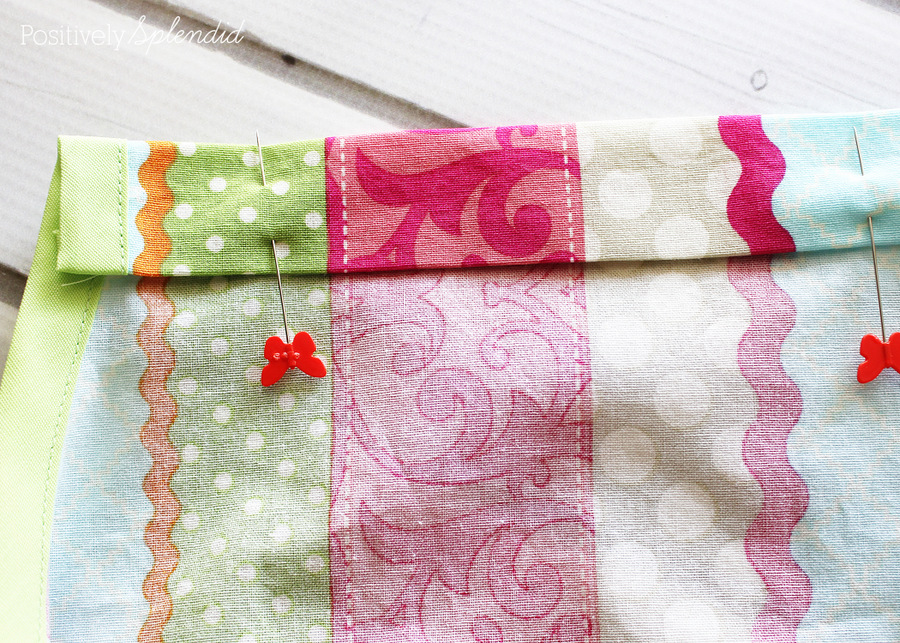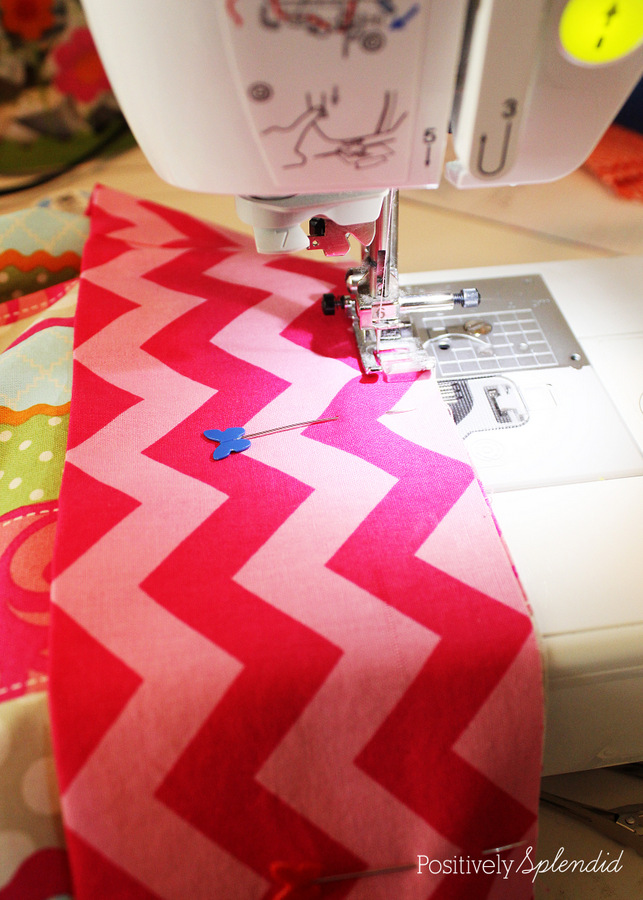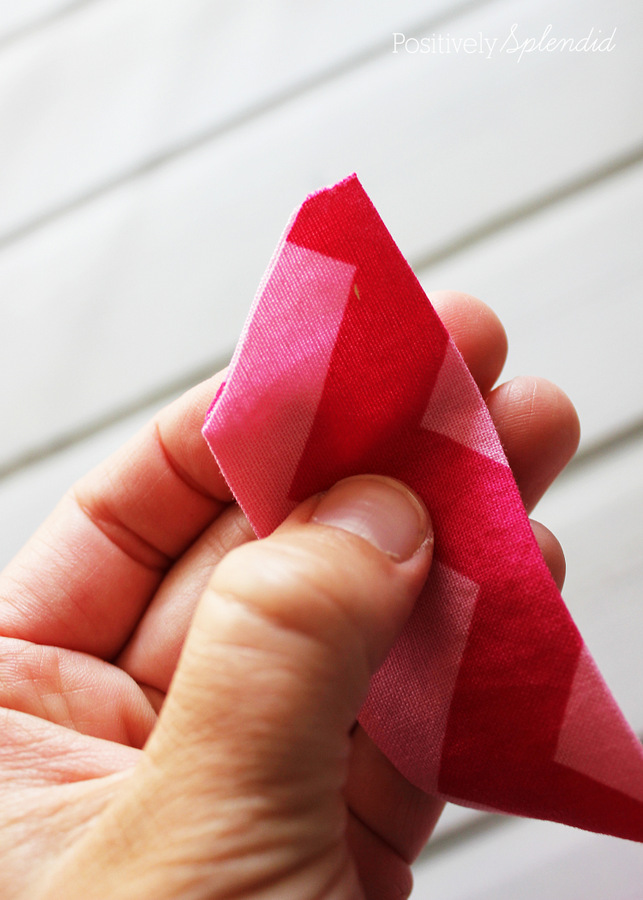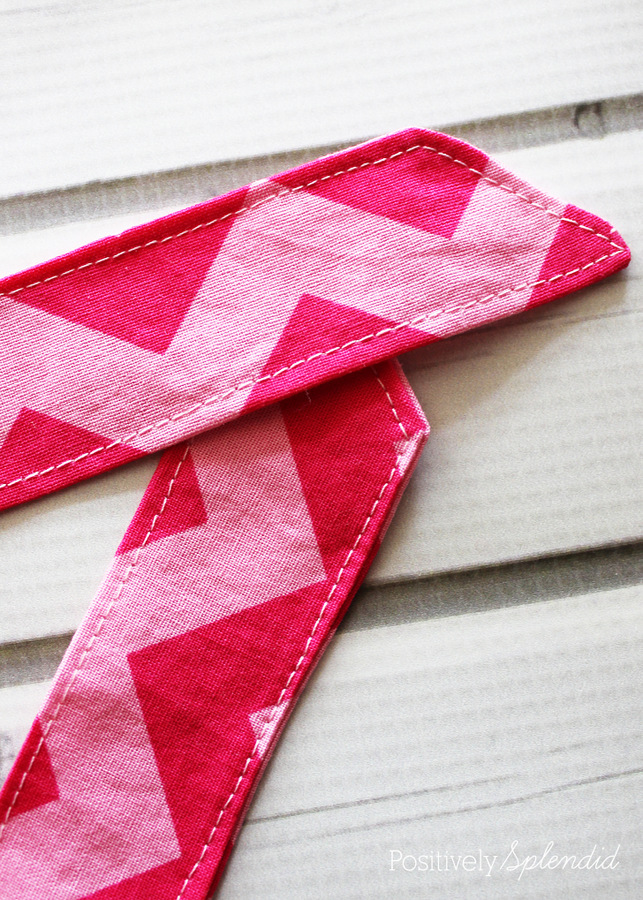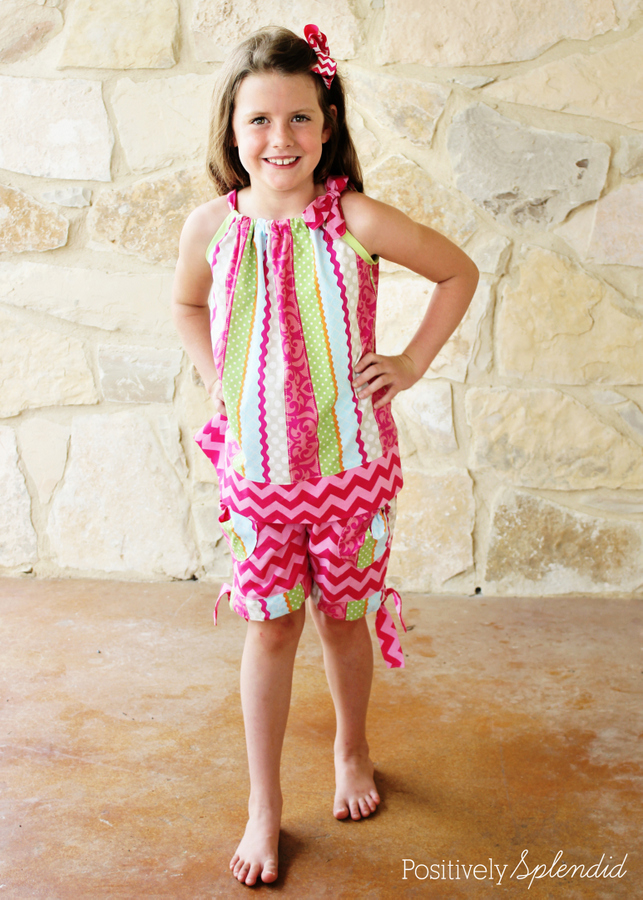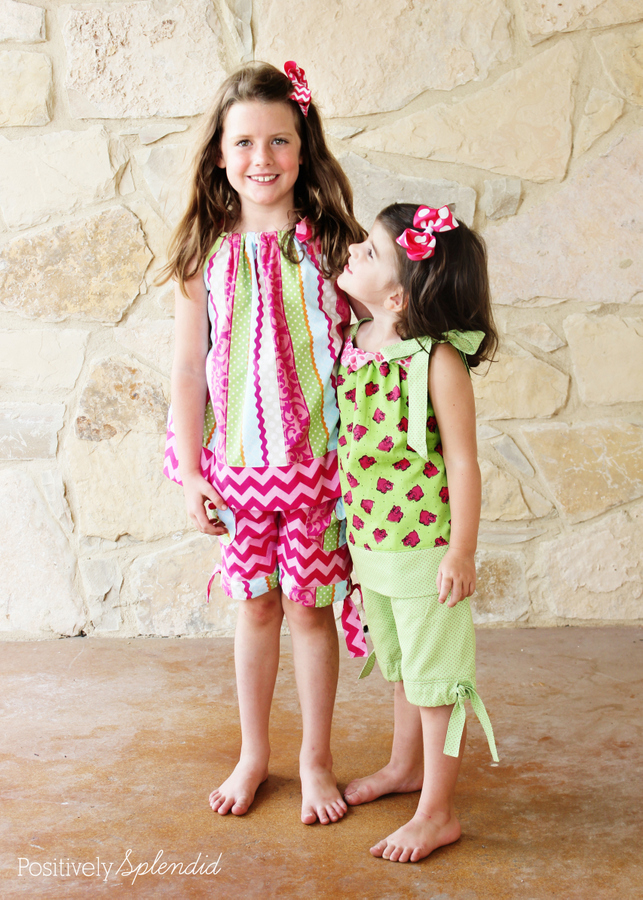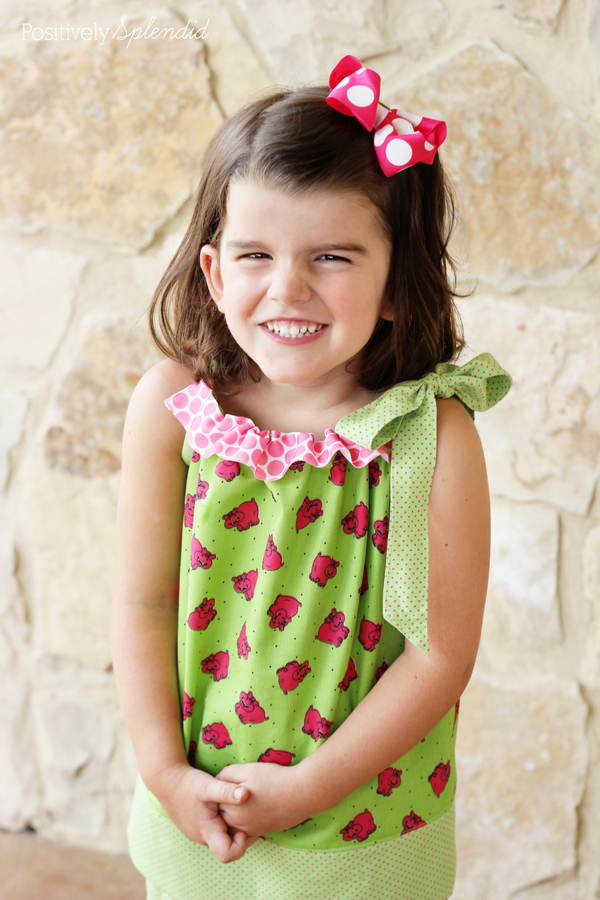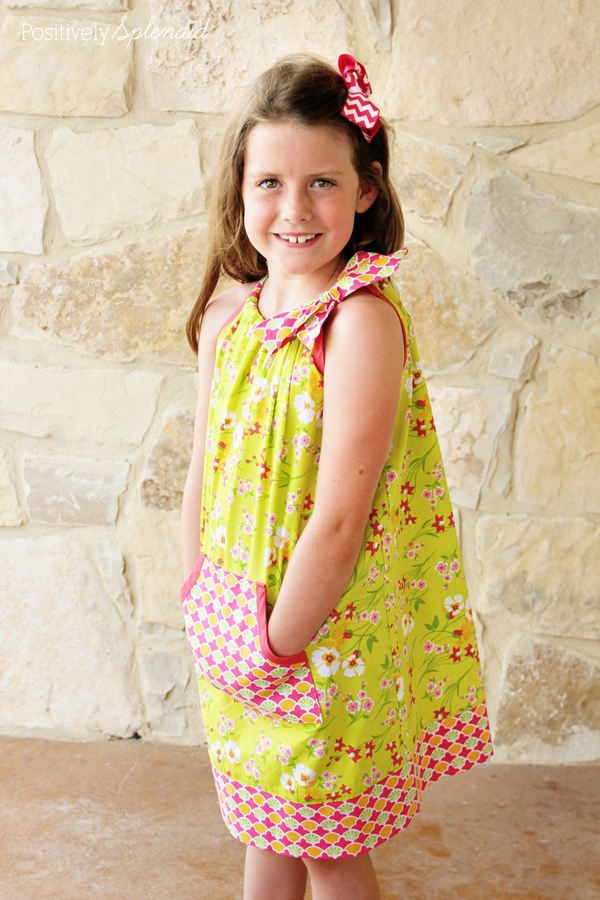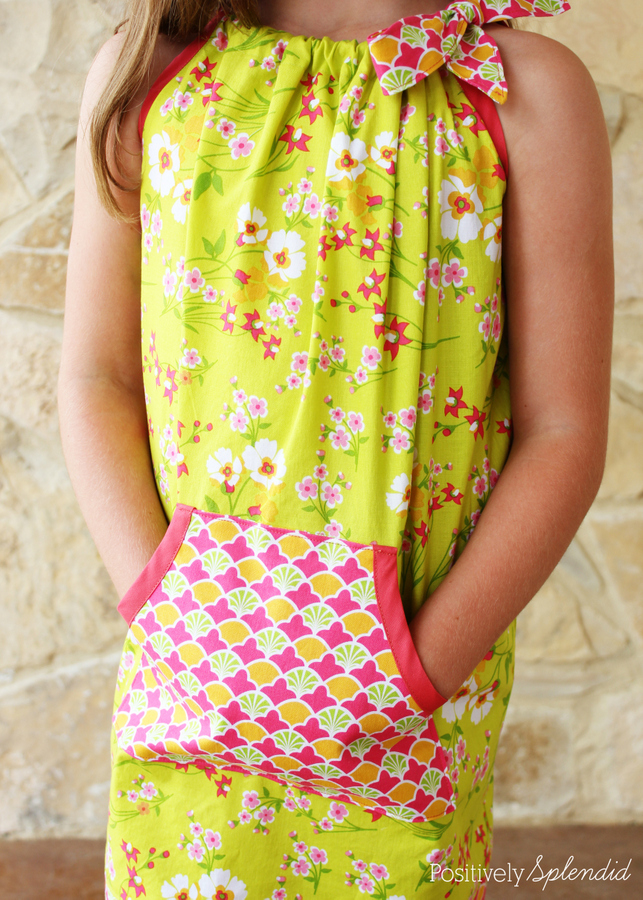For me, there are few things more gratifying than sitting down to stitch up a new outfit for my children, and when it comes to my girls, one of my favorite things to sew are pillowcase dresses and tops. These dresses and tops can be made easily from start to finish in the span of an afternoon, and they require such a small amount of fabric, you can sew up as many as your heart desires without breaking the bank! Plus, with just a bit of tweaking, it is possible to create countless different looks with the same basic pattern. Today, I am going to share how to draft a custom pillowcase dress or top pattern for a special little girl in your life, plus all the details for how to sew the dresses from start to finish. Let’s get started!
This post contains affiliate links for your convenience.
For this project, you will need…
- Fabric*
- Extra-wide double fold bias tape*
- Coordinating thread
- Basic sewing supplies: Machine, shears, pins, etc. (Check out my list of must-have sewing tools)
- Rotary cutter and mat (optional, but recommended)
- Frixion pen for marking (Read more about why I love these pens here)
*Amount needed will vary depending upon the size of the child
Planning and Cutting
In order to make a pillowcase top or dress, you will need to have the following measurements (in inches) for the child:
- Measurement A: Width of clavicle (also known as collarbone; just below neckline)
- Measurement B: Length from center clavicle to where you would like the hem of the garment to fall
- Measurement C: Clavicle to 1-2″ below underarm
- Measurement D: Hip circumference (measurement all the way around the hips)
Now, we’ll need to do a little bit of math. No need to be intimidated; this is all very basic…I promise!
For a top or dress without a band:
- Measurement A = A = Neckline
- Add 1.25 to Measurement B (B + 1.25) = B = Armhole
- Add 2 to Measurement C (C + 2) = C = Main Body Length
- Multiply Measurement D by 1.5 and divide by 2 ([D x 1.5]/2) = D = Main Body Width
For a top or dress with a 3″ band:
- Measurement A = A = Neckline
- Add 1.25 to Measurement B (B + 1.25) = B = Armhole
- Subtract 1.25 from Measurement C (C- 1.25) = C = Main Body Length
- Multiply Measurement D by 1.5 and divide by 2 ([D x 1.5]/2) = D = Main Body Width
The math is done! Now we just need to make our cuts. Although it is possible to do so with just a ruler and shears, using a rotary cutter and mat helps ensure precise, easy cuts.
For a top or dress without a band, cut:
- (2) main body pieces that are C”xD” (The measurement for the main body length, Measurement C, should run with the grainline of the fabric)
- (1) strap piece that is 3″ by the fabric width
For a top or dress with a band, cut:
- (2) main body pieces that are C”xD” (The measurement for the main body length, Measurement C, should run with the grainline of the fabric)
- (2) band pieces that are 7″xD”
- (1) strap piece that is 3″ by the fabric width
Example:
I want to make a banded dress for my daughter. Her measurements are:
- Measurement A = Clavicle width = 6
- Measurement B = Clavicle to below underarm = 4
- Measurement C = Length from center clavicle to bottom edge of hem = 22
- Measurement D = Hip circumference = 22
And the math:
- Measurement A = 6 = A = Neckline
- Measurement B + 1.25 = 4+1.25 = 5.25 = B = Armhole
- Measurement C – 1.25 = 16.5-1.25 = 20.75 = C = Main Body Length
- [Measurement D x 1.5]/2 = (22×1.5)/2 = 16.5 = D = Main Body Width
So I will need to cut:
- (2) main body pieces that are 20.75×16.5″
- (2) band pieces that are 7×16.5″
- (1) strap piece that is 3″ by the fabric width (in this case, it was 44″)
Helpful Hint: At this point, I recommend labeling the top edges (one of the sides on each piece corresponding to measurement D) of the main body pieces with a marking pen or a safety pin, especially when making a top where the length and width measurements are very similar.
Once all of the cuts are made, it’s time to make curved arm holes on the main body pieces. Place one of the main body pieces on a work surface so that the top edge of the piece is at the top. Take the right edge of the piece and fold it over to meet the left edge, carefully aligning the raw edges and corners of the piece. Working along the top edge of the piece, measure A” (the neckline width) to the left of the fold, and mark with a marking pen. Now, make another mark C” down from the top of the piece along the unfolded left edge. Draw a curve to connect the 2 marks, and trim this section away, reserving 1 of the remaining scrap pieces. Fold the remaining main body piece in the same fashion, and use the remaining armhole scrap from the first piece as a template to trim away the armholes on this piece.
Now, on to the fun part: sewing!
Sewing the Garment
Place the 2 main body pieces together, right sides facing, aligning the side edges; pin. Stitch along the side edges with a 1/2″ seam. Finish the seam with a serger or a zig-zag stitch on a standard machine. Press the seam to the back.
Cut 2 lengths of bias tape equal to the length of the armholes. Apply the bias tape to the raw edges of the armholes. (Be sure to check out my fool-proof method for sewing bias tape for help with this step.)
Fold the top edge of the dress under 1/4″; press. Fold under an additional 1″; press. Stitch along the bottom folded edge to form a casing.
If sewing a dress or top without a band, fold the bottom edge under 1/4″; press. Fold under an additional 1/2″, press and stitch to secure the hem. Continue to the strap step below.
If sewing a dress or top with a band, place the 2 bands pieces together, right sides facing, aligning the short and long ends. Pin. Stitch along the 2 short ends with a 1/2″ seam allowance. Press the seams open. Now, fold the piece in half lengthwise so that the wrong sides of the piece are facing and press. Pin the circular band piece to the lower edge of the right side of the main body. Stitch the band to the main body with a 1/2″ seam allowance. Finish the seam with a serger or zig-zag stitch, and press it up toward the main body. Topstitch above the seam.
Fold the strap piece in half lengthwise, right sides facing, and stitch along 1 of the short ends and the long edge with a 1/4″ seam allowance. (If desired, stitch the short end at an angle to form a pointed strap.) Carefully trim the seam to 1/8″ and use a tube turning tool to turn the piece right-side out. Press. If creating pointed ends, trim the open end at an angle, as shown, and tuck the raw edge down into the piece; press.
Topstitch along the entire perimeter of the pieces, closing the opening as you sew. Using a bodkin or safety pin, pull the strap through the front and back top casing and secure with a pretty bow.
Your pillowcase dress or top is complete!
I love that pillowcase dresses and tops are adorable for little girls, but they are appealing to big girls, too. (Here’s to a little while longer of getting to dress my girls in coordinating outfits!)
By adding different embellishments and trims, the very same pattern can be used to create so many fun looks! Pockets are always a fun way to punch up a dress or top, and I’ll be sharing the full tutorial for the kangaroo pocket pictured here next week.
Thanks so much for stopping in! Happy sewing!
Having grown up in a home brimming with sewing notions and paintbrushes, Amy has a deep love for all things creative. On any given day, you’ll find her knee-deep in her latest creative endeavor, with projects ranging from sewing and crafts to home decor and kid-friendly ideas. Amy believes that everyone, regardless of skill level or experience, possesses the ability to create something beautiful, and Positively Splendid was born of her passion for helping others harness their innate creative potential.
